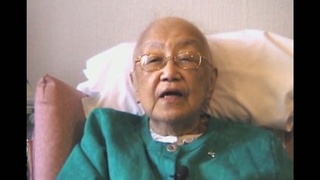Interviews
Voyage to San Pedro
Anyhow we manage the, then October, start to getting for the Yokohama to getting on the ship to came out. I used the Japanese Nippon Yusen, called, Nippon Yusen was the biggest shipping company in Japan at that time. They had a new, called, New York Maru, that's a boat, the name of the boat is. That was a, cargo boat. They have special room for the five room, or the cabin for first class passenger only. Expensive but nice for the passenger.
But my boat is first stop is going to Vancouver, Canada. Then stay 2 and a half day, and the next day the boat is coming back to San Francisco to stop again. Then coming back to Los, San Pedro. So took 19 day together start to off the boat is 19 day.
Date: February 2, 2012
Location: California, US
Interviewer: Chris Komai, John Esaki
Contributed by: Watase Media Arts Center, Japanese American National Museum













